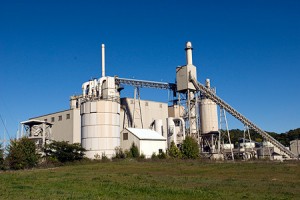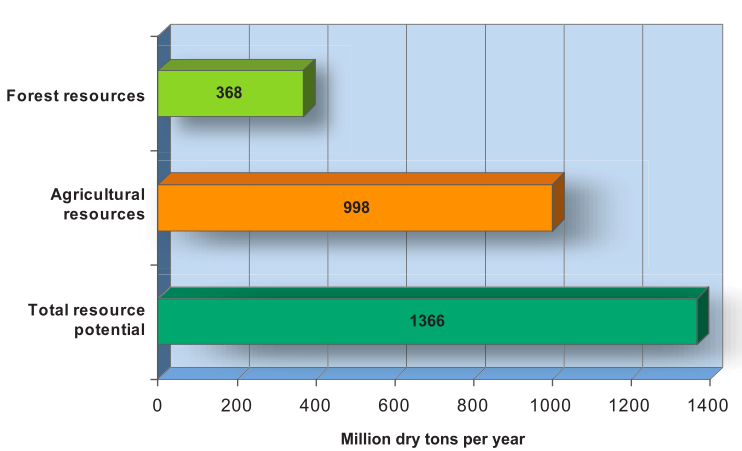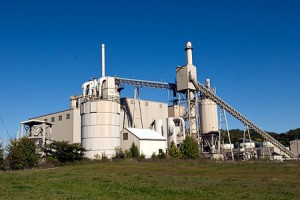
Cross-posted from Climate Progress.
Dominion, one of the largest utilities in the U.S., says it wants to convert three of its Virginia coal plants to run on waste biomass from timber operations. If approved by the state’s regulatory commission, it could bring about 150 megawatts of renewable capacity to the state and turn two “peaking” coal plants that operate only 25 percent of the time into round-the-clock generators that operate 90 percent of the time.
Like other coal-to-biomass projects we’ve reported on in the past, this one will create about 250 direct and indirect local jobs and only cost the typical ratepayer about 14 cents per month. So it will be good for the local economy and will increase renewable generation — but is it a core climate solution?
If biomass can help power plant owners ease away from coal faster, that is certainly a good thing. The Dominion announcement is particularly relevant given the number of planned plant retirements in the coal industry — there are currently 190 generators around the U.S. set to be shut down, and there’s a dwindling appetite to replace them with more coal.
While some independent power providers suggest that natural gas could fill the gap, it will be important for baseload renewables like biomass to be used in existing coal plants that don’t require much new infrastructure. And considering that new EPA mercury and air toxics regulations exclude biomass for now, the resource may look more attractive to plant owners like Dominion.
Joe Romm wrote about the benefits of using biomass in coal facilities a couple years ago:
Cofiring is a well-demonstrated strategy with multiple benefits. From a practical perspective, most of the existing coal plants are mostly paid off. Plus they are fully permitted and have all the necessary transmission plus they are connected to freight train lines and water supply. Plus this is baseload power. So you avoid all of the problems associated with citing new renewables in the Midwest or Southwest. Cofiring is thus a key near-term strategy for meeting climate goals — and renewable standards — in the midwest and southeast.
And, again, this is baseload power, and your typical coal plant has a capacity factor that is some two to three times larger than that of wind. So 20 gigawatts (GW) of biomass coal firing will generate as much power as 50 GW of wind.
But biomass also presents a number of logistical challenges around developing a new supply chain with more fragmented players, requiring different storage methods than coal, using different transportation methods to deliver the feedstock, and understanding how different fuels impact performance. Woody biomass also has lower BTU content, so you need more of it to get the equivalent amount of electricity.
And that brings us to the ongoing debate about biomass: Can we consider a repowering project like Dominion’s an important piece of the climate solution? Or does it have environmental trade-offs that exceed its benefit?
From a resource-availability perspective, we have a substantial amount of biomass potential — about 1.3 billion tons per year, according to a 2005 study [PDF] from the Department of Energy and Department of Agriculture. We burn about a billion tons of coal a year, so considering reduced conversion efficiencies compared to coal we’d theoretically need more than a billion and a half tons of biomass to make up for our coal use. Of course, it wouldn’t be very realistic or environmentally friendly to use all our land for electricity generation. But there are enough resources available to help transition a substantial amount of our coal fleet.

However, a number of questions have been raised about the greenhouse-gas profile of biomass for electricity generation. You might remember a study [PDF] from the Manomet Center for Conservation Sciences released this time last year, which concluded that the “carbon debt” of biomass takes more than 20 years to pay off and the use of biomass in coal plants may not actually reduce greenhouse-gas emissions.
But in a New York Times interview, the lead researcher for the study, Thomas Walker, explained that the findings were not the end-all answer on biomass:
[The] headlines fail to recognize that over time using wood for energy can lead to lower atmospheric greenhouse gas levels. While emissions from burning wood are initially higher than from fossil fuels, regrowing forests sequesters carbon, a process that eventually can yield greenhouse gas levels lower than would have resulted from continued burning of fossil fuels.
To further complicate the story, while our life cycle analysis looked at greenhouse gas emissions from production and transport of both biomass and fossil fuels, we couldn’t evaluate every possible environmental impact of energy production, such as broken blowout preventers 5,000 feet under water or mountaintop removals to access coal. Rarely (maybe never) does society really weigh the full array of costs and benefits of our decisions. But as the world gets more complicated, and as resources get more scarce, and as the human population climbs to nine billion (and then some), we’re going to have to become more serious about analyzing these kinds of trade-offs.
Walker is exactly right — there are trade-offs for everything when considering the myriad life cycle factors for a range of resources. If the biomass isn’t harvested in a sustainable way, using it to generate electricity isn’t much better than removing mountaintops for coal. But if done in a thoughtful, environmentally and community conscious way, the value of biomass increases substantially.
This is really an issue for policymakers at the state and national levels. But our study suggests that it’s important to be specific about how you define biomass. Energy generation from harvests of live whole trees from natural forests has different life cycle implications than energy generation from wood wastes that otherwise would have released their carbon to the atmosphere relatively quickly.
The Oak Ridge National Laboratory projects that we can realistically convert about 26 GW of coal capacity to renewable biomass by 2020. Assuming companies like Dominion are sourcing their feedstocks from waste products (they say that they are),
biomass can be an important tool in helping transition away from fossil-based resources, despite some of the drawbacks.



